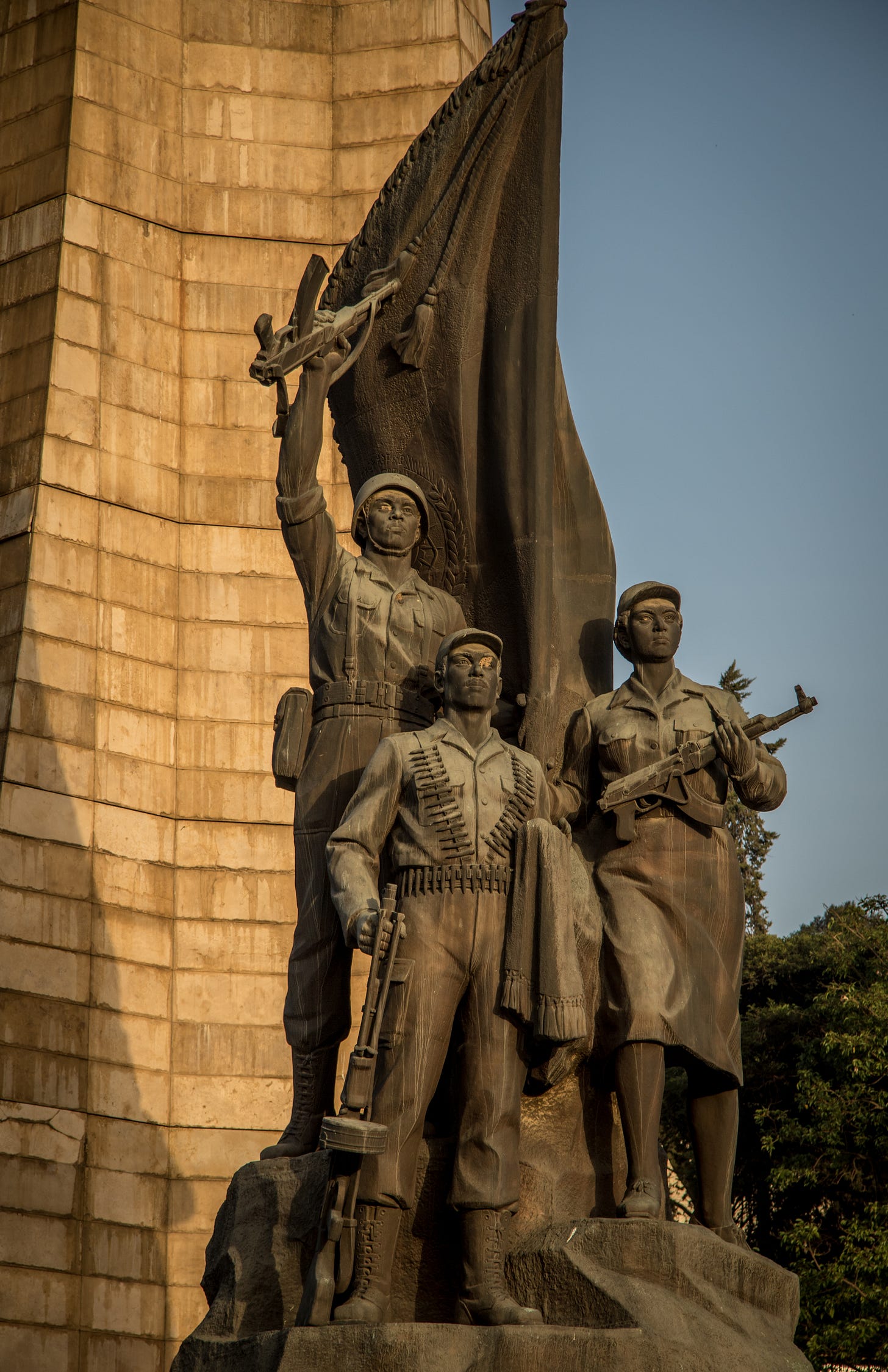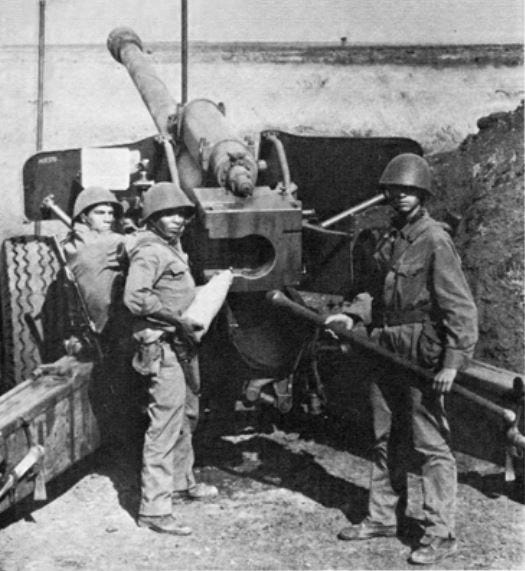
This is the second part of a history on the Ethiopian Civil War. The first part can be found here.
Following the establishment of the Derg (initially Coordinating Committee of the Armed Forces, Police and Territorial Army, later the Provisional Military Administrative Council), it seemed as though socialism was on the march. Three out of the five states—and by far the three biggest—that straddled the southern Red Sea and the western Gulf of Aden including the Bab el-Mandeb (the strait that connects the two bodies) were now under some form of Marxist-Leninist or Soviet-aligned governments. One might have assumed that similar political ideologies could have contributed to regional stability. However, this would prove to be short-lived as tensions grew (once again) between Ethiopia and Somalia.
The southern Ethiopian-Somali border had been in dispute for decades. In fact, a failure to agree to a demarcation had been used as a justification for Italy’s invasion in 1935 following a clash that became known as the Walwal Incident. Not only was the border a cause of tension but so was local discontent with Addis Ababa. In Ethiopia’s ethnically Somali province of Ogaden, the Ogaden Liberation Front launched an insurgency in 1963, which was followed by direct Somali governmental intervention in 1964, resulting in the two neighbours fighting a two-month long border war. A similar process would repeat itself over a decade later.
In February 1977, the Western Somali Liberation Front (WSLF) launched its own rebellion. Like the Ogaden Liberation Front, the WSLF was also backed by Mogadishu, receiving weapons from across the border. With a separatist movement in full swing in the Ogaden region, the Somali government of Siad Barre—who had seized power in a military coup in 1969 and quickly proclaimed alignment with the Soviet Union—sought to take advantage of the moment.
In a bid to enlarge its territory and establish a greater Somalia, Mogadishu invaded Ethiopia on July 13th, 1977 believing that the new government in Addis Ababa was internally weak, both on the political level as well as on the provincial level. Initially, the conflict went very well for the Somalis, who made significant advances into Ethiopia, especially in friendly lowland areas. 35,000 Somali government troops, alongside 250 tanks and 350 armored personnel carriers, pushed across the border, backing the WSLF before stalling.
This left Moscow in a rather awkward position, having provided weapons to both sides. Initially the Soviet government sought a ceasefire but after that failed decided to side fully with Ethiopia. This included a thousand advisors as well as 100,000 tonnes of military equipment, which was three times more than the entire existing Ethiopian stock. Shortly after, other socialist countries offered materiel support as well, ranging from East Germany to North Korea. Meanwhile, some countries even sent troops, which would prove to be decisive. This included approximately 17,000 Cuban troops, some of whom had previously gained experience in the Cold War hotspot of Angola, as well as Cuban pilots who commanded MiGs, Sukhois, and Mi-8 helicopters. South Yemen contributed with a tank battalion. Combined, this backing by foreign governments helped Ethiopia avert disaster and instead launch a successful counterattack. However, not all socialist governments backed the Ethiopians. With Sino-Soviet relations still tense, Beijing sought to exploit the break between Moscow and Mogadishu by backing the latter.
While fortune seemed to have favoured Somalia in the summer of 1977, the arrival of military assistance in Ethiopia in the autumn meant that the tide of the war would turn in early 1978. After a nearly six-month long stalemate, momentum had decisively shifted in favour of the Ethiopians. The vast terrain left the Somalis overstretched, having failed to deal a fatal blow. Hopes for a governmental collapse in Addis Ababa were misplaced, with the conflict instead consolidating the government in the face of a common enemy despite significant issues with morale, particularly in the early stages of the war. On March 5th, 1978, Ethiopian forces retook the town of Jijiga, approximately 70km west of the Somali-Ethiopian border. By March 9th, the Somali government announced its withdrawal from the Ogaden region, with the withdrawal being completed on March 15th and the WSFL effectively defeated. On March 23rd, the Ethiopian government announced it had retaken the last frontier post.
The conflict resulted in over 6,000 military fatalities on each side, with total killed, wounded, and captured (or missing) estimated at 30,000. On top of that, approximately 400 Cubans, 100 Yemenis, and 33 Soviets also died. Roughly half a million are believed to have been displaced by the conflict. Having lost the war, Siad Barre would eventually turn to the West for support before later fleeing the country, resulting in the country’s collapse beginning in the late 1980s, which resulted in a civil war that still endures.
The Ogaden War only lasted between July 1977 and March 1978 but would have a transformative effect. It brought Ethiopia even closer to the Eastern bloc while further boosting its military strength and self-confidence. With this now in hand, the Derg would reorient its military capabilities internally in an effort to defeat guerrilla forces.
The Ogaden War coincided with a radicalisation of the Ethiopian Revolution. The Derg initially showed some willingness to work with preexisting leftist organisations but this diminished relatively quickly. Groups like the All-Ethiopia Socialist Movement (MEISON) at first backed the Derg following the Ethiopian Revolution but found themselves increasingly marginalised. A failed assassination attempt on Mengistu led to an increased crackdown, particularly on the Ethiopian People's Revolutionary Party (which had also initially supported the Ethiopian Revolution). Mengistu announced a “Red Terror” that would eventually claim tens, and by some estimates hundreds, of thousands of lives with government and government-aligned actors having been granted “free action” to take on their enemies.
Suggested readings:





